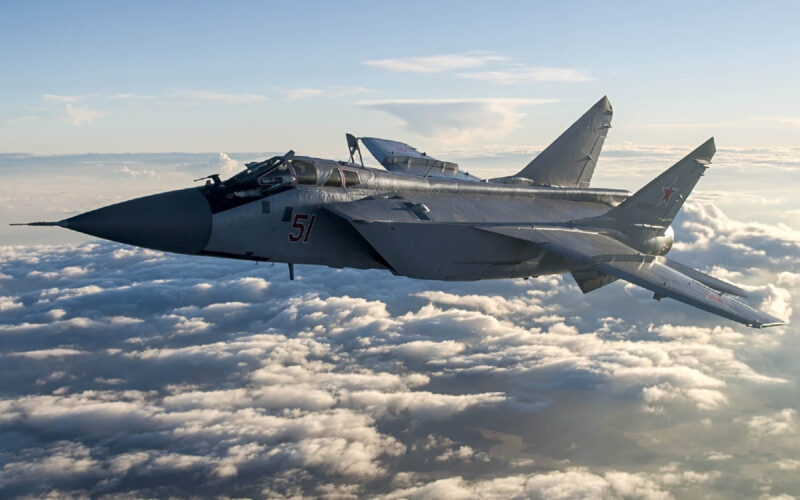Three MiG-31 fighters intercepted an RQ-4B Global Hawk unmanned aerial vehicle of the United States Air Force in the skies over the Chukchi Sea.
“Russian airspace control monitoring the neutral waters of the Chukchi Sea detected an air target approaching the state border of the Russian Federation,” the Russian National Defense Management Center reported on August 11, 2020. “To intercept the target, three MiG-31 fighters from the air defense forces of the Eastern Military District were scrambled.”
The three interceptors approached the aerial target for identification and escorted it away from the Russian flight information region (FIR). When the UAV turned away, the MiG-31s safely returned to their home base. The interception was carried out “in accordance with international rules for the use of airspace,” states the Russian military.
The RQ-4B Global Hawk is a High Altitude Long Endurance (HALE) drone that sports a multi-sensor mission payload (radar, electro-optical, infra-red, electronic support measures). The aircraft can fly up to 24 hours at altitudes of up to 56,500 feet with an operational range of 8,200 nautical miles and can monitor 1 million square miles of ocean in a single flight.
A squadron of twelve modernized Mikoyan Gurevich MiG-31BM supersonic interceptors was recently deployed on the Kamchatka Peninsula, at the easternmost point of Russia bordering the Pacific Ocean, to control the airspace in an increasingly contested region.
Second only to the Mikoyan MiG-25 Foxbat in speed, the Mikoyan MiG-31 Foxhound entered service as a supersonic interceptor in 1981. The maximum takeoff weight of 46 tons allows it to carry a substantial array of weapons that include the Vympel R-37M (or AA-13 Axehead for NATO), a hypersonic air-to-air missile with a range exceeding 300 kilometers (186 miles).
The latest iteration, called the MiG-31BM, features a modernized cockpit with new screens and a head-up display, a radar that improves the engagement distance to 280 kilometers (173 miles) for air and surface targets, and a canopy that can sustain higher speeds. Now able to reach a top speed exceeding Mach 2.8, it will be capable of intercepting fighter jets, cruise and hypersonic missiles.

